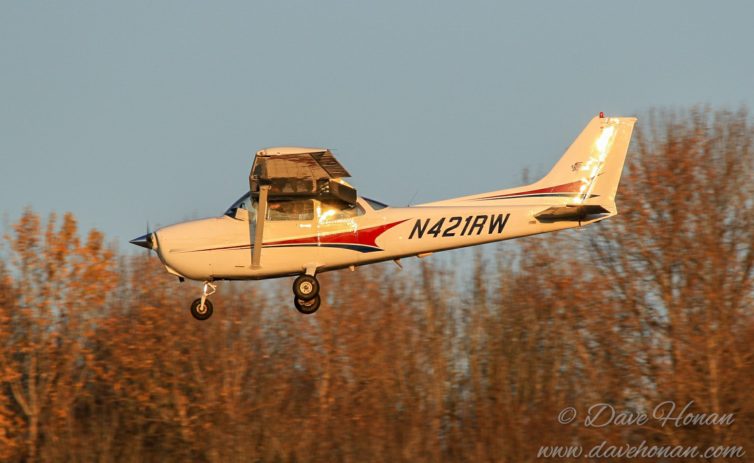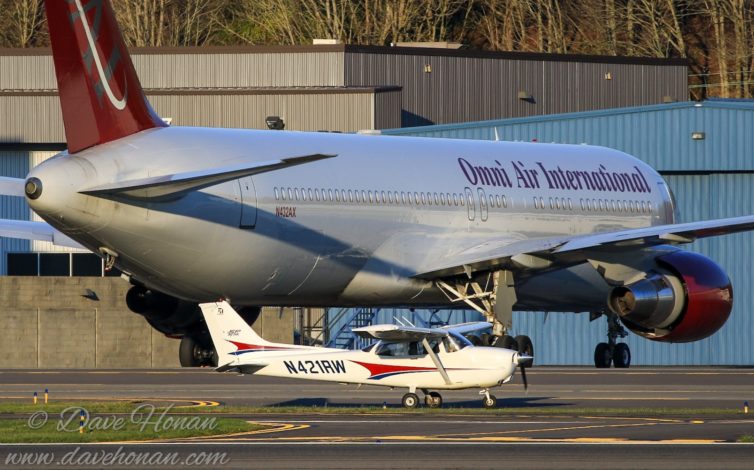
Doing some solo pattern work on a recent sunny Seattle afternoon – Photo by Dave Honan
This is a continuation of my multi-part series on learning to fly. You can read the whole Fly With Francis series here.
Progress is being made: I’ve done several more solo flights, and am feeling lots better about landings, maneuvers, and dealing with air-traffic control. We’re working on navigation and cross-country stuff now.
The blues part from the headline comes from the weather-enforced gaps in my training flights. Here in the Pacific Northwest, winter usually means low ceilings and visibility-lowering precipitation. Scheduling time in aircraft becomes a game of chance – you sign up for sessions in advance and then hope for the best.
We’ve tried three times now for a cross-country flight that will qualify for the FAA requirement of flying at least 50 miles away from one’s home airport. We’ve had to cancel all three because of poor weather.

The Cessna 172 feels reasonably big until you taxi past a 767 – Photo by Dave Honan
Related to that flight, there are standard planning forms that need to be filled out in advance, covering everything from routing and visual checkpoints to wind-correction angles, fuel burn, weight-and-balance calculations. It also includes looking up all of the frequencies for the airports/towers we’ll interact with along the route. At least I’m getting plenty of practice with the paperwork.
Night training is coming up, too, weather depending, of course. Carl, my Galvin Flying instructor, introduced the topic in the simulator so he could pause the flight and we could talk about all the various optical illusions pilots have to deal with when flying, and landing, in the dark. There’ll also be a night cross country flight with my instructor.
Breaks in the weather meant I was recently able to squeeze in some solo pattern work – one of those days was overcast, but the ceiling was 9,000 feet and visibility was 10+ miles, which very comfortably qualifies for visual flight rules. The reported wind was 9 knots from 130 degrees, which is a headwind when landing on BFI’s 14L/R runways. So I got my instructor’s approval and headed out for an hour in the pattern.
Turned out, though, that the winds at BFI’s pattern altitude of 1,000 feet were gusty and squirrely. In rapid succession, I got to enjoy some strong updrafts, downdrafts, a touch of wind shear, and a fair amount of turbulence. The wind was also strengthening a bit and shifting westward.
After two laps around the pattern, I decided that, even though I was managing everything quite well, including the crosswind landings, I should call it a day and changed my third touch-and-go tower clearance to a full-stop landing request and went back to the ramp early.
Seems I’m also learning prudence.
We’re trying for that cross-country flight this coming weekend – stay tuned.